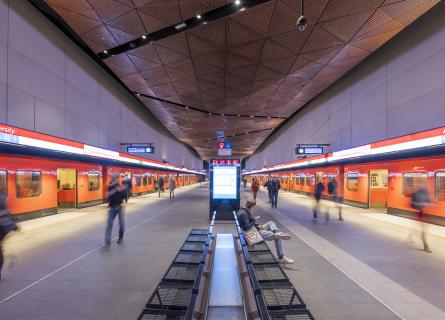
Collaborate and win
Future Cities Insight #17 - Collaborate and win
It is the time of the year when we look back on what has been, and try to look into the future. Here we attempt to make a summary of an intense year in future mobility from different angles and perspectives. Next year we step into a new decade, the American presidential election and the Tokyo Robot Olympics.
But first, let us talk about this year’s biggest trends in mobility.
The micromobility revolution
Despite the trend having started last year already, we cannot fail to mention the explosion of electric scooters that has taken place on our streets during the past year, in a number of Swedish cities. The remaining question is if this phenomenon of micromobility is here to stay, or if we have reached the highest point of a trend? Despite the citizens of the cities taking a liking to transportation by electric scooter, the scooters have had to endure a significant amount of criticism. Among other things, they have been criticised for having a lifespan of about six weeks, which becomes a paradox when the electric scooter companies present themselves as the sustainable means of transport in cities. At the same time, the scooters generate data through IoT, which could help urban planners of the future with, for example, analyses of movement patterns for infrastructural changes in the city.
Increasing popularity of rail travel
In the course of 2019, words such as eco-anxiety (klimatångest), flight shame (flygskam) and staycation (hemestra) have become a regular part of Swedes’ daily vocabulary. This can partly be attributed to Greta Thunberg’s energetic climate strike, which has spread like wildfire across the world. 2019 was the year when words became action and rail travel increased at an explosive rate. All of a sudden, Swedes’ annual summer holiday to someplace warmer in the summer was replaced by a train ride to Europe or a vacation in Sweden. One of the few travel agencies focused on rail travel noticed the shift, as their phone lines were busy for the most part of the summer. At the same time as the number of members of the Swedish Facebook group Tågsemester (Train Vacation) increased significantly.
Flight shame – soon just a memory?
Flying has been given the leading role in this year’s climate discussion and much focus has been placed on the current fuel’s negative impact. Let’s remind ourselves that electric aircrafts already exist, if only at a small scale, and soon we will see bigger electric airplanes in the skies. Elise is a Swedish consortium gathering players within both academia and business, in order to get electrical aircrafts going. Heart Aerospace will deliver the first electric airplane, ES-19, to be certified for commercial flying, in 2025. If Sweden is to be available to all, we need all means of transport. Trains and flights that complement each other, and in the best case even collaborate, as yet another form of the electrified, shared mobility of the future.
Reversals in the carpooling business
This year, Volvo began the migration from carpooling service Sunfleet to M. The expectations have been high, but judging by the initial reactions, there is no great success waiting around the corner. The combination of expensive, premium and a lack of electric cars have baffled many users. The increasing feature of free flow instead of stationary has further complicated M as a solution for company-based carpools. It remains to see how the roll-out continues in 2020. At the same time, the number of electric carpool suppliers and the number of electric cars offered are increasing. Keep an eye out for MoveAbout, Elbilio and Aimo!
Transport electrification is here to stay
Many cities struggle with increasing noise levels and local emissions. To some extent, this has sped up the vehicle electrification trend, both in terms of electric cars and electric buses. For example, the Swedish city of Gothenburg will implement a further 160 electric buses within the coming year. At the same time, we do not automatically solve the climate challenge by electrifying our vehicles. One topic that has been debated heavily during the past year is whether our power distribution grids are equipped to handle the peak loads that will arise in our power grids. It is up to the future to map this out, but something has to change if we are to continue to electrify our vehicles.
Turning car parks into mobility hubs
Parking is also a heavily debated topic in cities, since parking spots are often placed in attractive spaces in the city. At the same time, many cities have targets for reducing car dependency, to promote more sustainable means of transport such as, for example, public transport. One trend that keeps growing stronger is turning existing car parks into mobility hubs. This means that other types of services, such as charging stations, parcel delivery and rental bike systems, are included in the car parks.
Last year we talked about Europe’s first self-driving buses in regular traffic, and this autumn a new mobility service called Travis was launched in Sweden. This may be a small step for the world as a whole, but it is a real leap forwards for public transport. The Stockholm Public Transport (SL) will be first in Sweden with external digital ticket agents. Travis makes it possible for people to easily tailor their trips after their own wishes and needs, rather than after the bureaucratic boundaries of yesterday.
Next year we will, however, still need to plan our journeys and steer our cars. As we wait for AI to sense where we are heading, for electric aircraft to give us domestic wings and for the autonomous systems to take care of the rest, we continue to ride electric scooters, trains and drive electric cars. Brave collaboration is needed to deal with the challenges faced by our society.
Stockholm, December 2019
Karolina Pamp-Sandgren, Mobility Expert at AFRY




